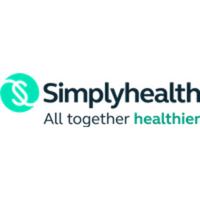The 3 point action plan to help design a health data policy employees will trust

Advances in technology present exciting opportunities to delve even deeper into health data, and see the health status of employees on a new level. How many of us, who wear wearable technology, look at how many steps we’ve taken, monitor our heart rate, or check how well we’ve slept when we wake up in the morning?
This data could hold the key to changing the face of wellbeing in organisations. By improving awareness of health, we can help foster a preventative approach, empowering people to proactively take care of themselves. In turn, this could help reduce absence levels, improve return-to-work times, and boost productivity.
But with all this, comes the need for a robust health data policy that inspires confidence and trust among the workforce. If health data is something your organisation wants to explore further, then here is our three point action plan to help you design a health data policy that employees will trust:
- Be open and honest
The first step is to be open and honest in your communication. Craft a policy that clearly explains the reasons why you want to track and analyse employee health data. It should also outline the benefits for the employee; that you can help them improve mental health by making adjustments to the working day or environment, get their bad back sorted out, or advise on lifestyle changes to improve diet or fitness. - Reassure people
Health data is arguably the most sensitive of all personal data, so step two is to make sure your policy reassures employees that no judgments, repercussions or decisions will be made about them or their employment, based on their health data. You should also clarify that health data will be stored securely and processed in line with GDPR requirements. - Allow choice and control
Perhaps the most important step of all is to allow choice and control for employees. For example, if you decided to offer wearable technology to enable deeper tracking of health data, remind employees it’s a choice to participate. This puts the control back in their hands, and it might only take a handful of ‘early adopter’ employees to encourage others to take part. And remember to include information about how to make a subject access request for data, if needed.
Most of us will be comfortable with traditional measures of health data. But new ways seem more invasive. This makes it imperative to create a trustworthy policy that explains your employer position and the benefits for your employees. And if you earn that trust, the benefits of tracking health data are limitless
Read more about supporting health and wellbeing through data and digital solutions.
This article is provided by Simply health.
Supplied by REBA Associate Member, Simplyhealth
Our health plans make it easy for people to maintain their health&wellbeing.







